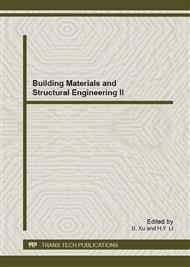p.195
p.199
p.203
p.208
p.213
p.218
p.223
p.227
p.231
Improving the Biodegradability of Polylactic Acid at Alcaligenes Faecalis and Staphylococcus Aureus Using the Optimization Method
Abstract:
The degradation of polylactic acid (PLA) can be divided into the hydrolysis, the degradation and metabolism. The hydrolysis reaction is caused by chain breakdown of the polymers of polylactic acid, resulting in the degradation of polylactic acid. Therefore, this study aims to improve the hydrolysis rate of PLA at the early stage of degradation process and then it increases the degradation rate of the PLA in the natural environment. We employed Taguchi method for parameter design of PLA hydrolysis, focusing on the control factors that affect the conditions of the hydrolysis rate of PLA, such as temperature, bacteria, ventilation degree, and nutrients and we also used orthogonal array to precede experiments, in conjunction with analysis of variance (ANOVA) to identify significant factors and optimal hydrolysis conditions for PLA. By analysis of variance, we know that temperature and bacteria as significant factors, and the factor of temperature contributed 96.882%. Finally, we employed confirmation Experiment to verify the reproducibility of the experiments. Our results have shown that the best condition of PLA hydrolysis rate experience with the reliability of its representatives are in compliance with the 95% of confidence interval, CI, which indicates the reliability of our study.
Info:
Periodical:
Pages:
213-217
Citation:
Online since:
August 2013
Authors:
Price:
Сopyright:
© 2013 Trans Tech Publications Ltd. All Rights Reserved
Share:
Citation:


